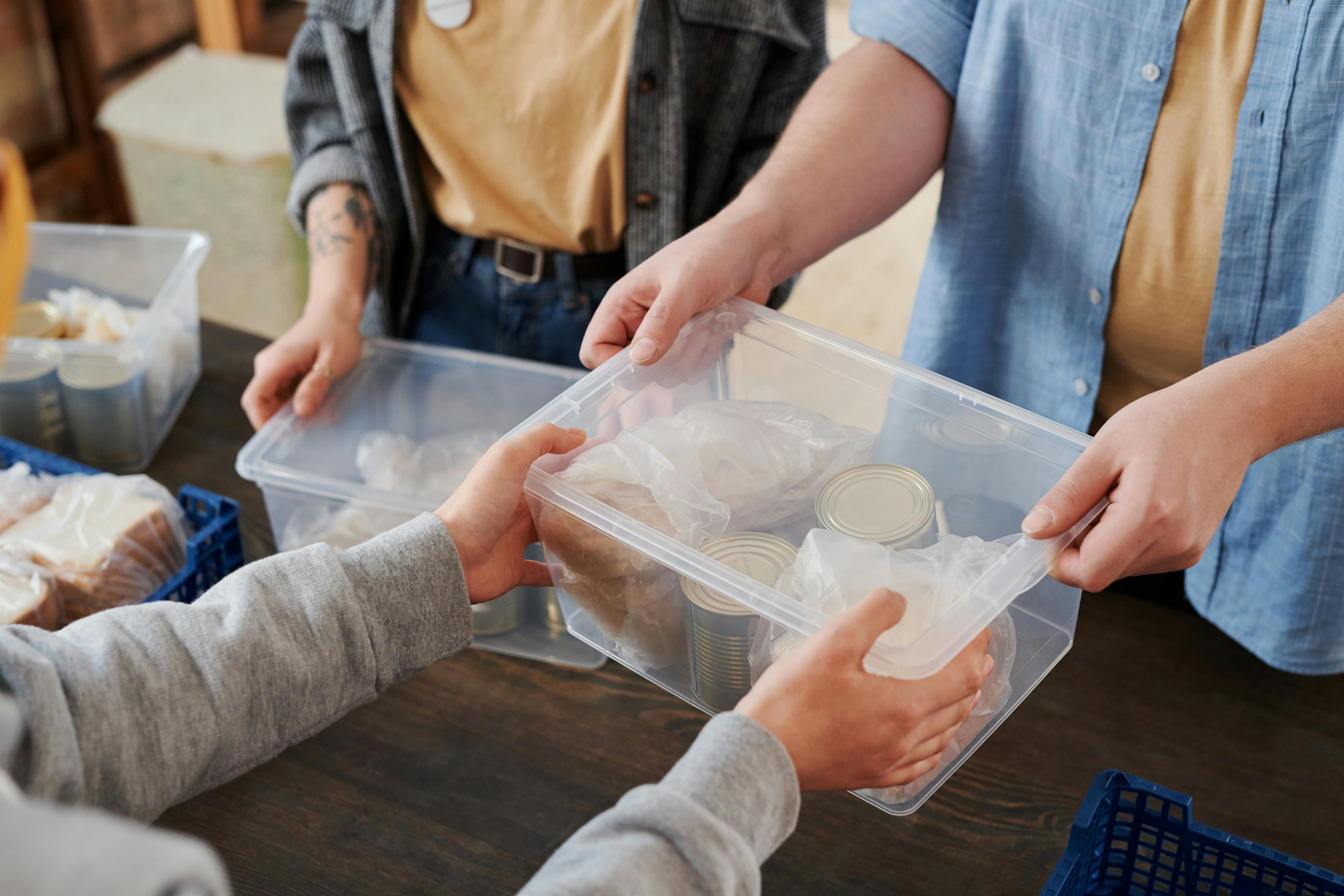
The Logistical Backbone: From Drop-Off to Distribution
A massive influx of goodwill is useless if it turns into a mountain of unusable, expired product. The logistical apparatus behind the Season of Giving is where operational rigor prevents good intentions from going to waste. We adhere to principles seen in professional freight transportation, prioritizing food-grade handling and route efficiency.
The Centralized Sorting and Quality Control Hub
As donations flood the various collection sites, a single, centralized staging area—often a leased warehouse space secured by Lang Management for the duration of the drive—becomes the operational nerve center. This hub is staffed by dedicated volunteers and seasoned logistical personnel who manage the most critical step: sorting and quality control.
Every single item is inspected. This is non-negotiable. Items are checked for expiration dates, damaged packaging (dented cans, torn boxes), and overall viability. Items that do not meet the stringent safety and quality standards of The Soup Kitchen are immediately separated for appropriate disposal or, if suitable, alternative donation to non-food related charities where possible. This meticulous quality control step is essential; it protects the hard-won reputation of the drive and, more importantly, ensures that only the highest quality, safest food reaches those relying on it. Furthermore, detailed inventories are created at this stage—weight totals by category—providing the final, accurate metrics for the campaign’s success report, a crucial piece of metric reporting.
Actionable Takeaways for Logistics:
Coordinating the Final Mile: Transportation and Handover
The culmination of the logistical effort is the “Final Mile”—the coordinated final delivery. This phase requires significant resources, often involving the leasing of box trucks and the meticulous scheduling of numerous volunteer drivers who commit their time for these heavy hauls.
Delivery is not a random event. It is scheduled during a time when The Soup Kitchen’s receiving staff is best prepared to handle a large influx of goods, preventing massive bottlenecks at their loading docks, which can disrupt their own daily operations. A smooth handover is a sign of respect for the recipient’s ongoing work.
The actual transfer of goods is treated with the ceremony it deserves. It symbolizes the completion of the community’s collective effort. Representatives from both Lang organizations are present to formally present the final donation tally—often shown on a large display board—to the leadership of The Soup Kitchen. This public presentation reinforces the enduring partnership and offers a chance to publicly thank the volunteers and donors who made the massive undertaking possible.
The Human Element: Volunteerism and Employee Engagement. Find out more about Corporate matching programs for charity donations guide.
A food drive of this scale cannot be sustained by transactional participation alone. The long-term health of the Season of Giving relies on embedding a genuine culture of service, a core tenet strongly linked to enhanced employee engagement in 2025 corporate strategy.
Cultivating a Culture of Service Among Staff Members
The involvement of Lang employees transcends mere writing of checks or donating a can from the pantry. Active volunteerism is strongly encouraged, and critically, facilitated through paid time off for approved service hours directly related to the drive. This hands-on engagement fosters a much deeper sense of purpose than a simple monetary contribution ever could. When an employee spends four hours sorting perishable goods, they gain a firsthand, visceral insight into the challenges faced by their neighbors—knowledge that often inspires more thoughtful and strategic giving in future years.
Team-building exercises are frequently structured around the drive itself: an afternoon devoted to sorting, a packing competition, or even assisting with short delivery routes. This strengthens internal bonds while directly serving the external community. This investment in employee engagement is recognized not as an ancillary activity, but as a core component of long-term human resources development, boosting overall job satisfaction as contemporary research suggests.
How to Deepen Engagement:
Recognizing and Celebrating Outstanding Community Contributors
To maintain the high level of enthusiasm year after year—avoiding the common pitfall of burnout—formal recognition programs must be in place to celebrate dedication from all participants. Recognition is the fuel for sustained momentum.
An annual “Season of Giving Awards” ceremony, or at minimum, a prominent feature across all company intranet sites and newsletters, highlights the key players. This shines a spotlight on top-performing Drive Captains, the volunteer teams that logged the most collective hours, and the community partners who made exceptional, unexpected contributions. These acknowledgments must be personalized and publicly shared across platforms, creating powerful positive reinforcement loops. This public appreciation ensures that volunteers feel seen and valued for their sacrificial commitment of time and effort, which is often a more precious commodity than the donated items themselves. Authenticity in recognition is paramount; superficial praise can backfire, but genuine acknowledgment builds lasting trust.
Measuring Impact and Future Forecasting
The final truck is unloaded, but the work is only half done. The critical step for ensuring longevity and improvement lies in the meticulous analysis of the preceding weeks.. Find out more about Employee engagement strategies real estate CSR strategies.
Post-Campaign Analysis and Metric Reporting
Once the logistics hub is cleared, the comprehensive analysis begins. This involves compiling the final weight totals, comparing them against the established goals, and dissecting the data to understand precisely what worked and what didn’t. We analyze which collection methods were most effective (e.g., office bins vs. supermarket partnerships), which communication channels yielded the highest response rate, and—most importantly—where logistical bottlenecks occurred.
A detailed report summarizing these findings is generated. This report quantifies the success: the total weight collected, the estimated number of meals theoretically provided based on The Soup Kitchen’s conversion rates, the participation rate percentage increase over prior years, and the overall efficiency ratio (cost of operation vs. pounds collected). This transparency is crucial. The final report is shared internally across both Lang entities and formally presented to The Soup Kitchen’s leadership. This act of sharing demonstrates the tangible results of the community’s generosity and sets a clear, undeniable benchmark for accountability for the next drive. As we monitor the broader economic landscape, comparing our results to national trends—such as the **food insecurity in the U.S.** data from 2023, where 47.4 million people experienced food insecurity, is a sobering reminder of the need for this benchmark—becomes paramount.
Strategic Adjustments for the Next Annual Cycle
The data gathered from the post-campaign analysis directly informs the planning for the following year’s drive. This iterative process is what keeps the “Season of Giving” dynamic, responsive, and continually improving.
If the analysis shows that donations peaked sharply during the first week but then severely declined mid-campaign, the next year’s strategy might incorporate surprise mid-drive challenges or smaller, highly targeted promotions designed specifically to sustain momentum through that identified slump. If feedback indicated a persistent shortage of specific hygiene items, the focus for the next “Season of Giving” might be broadened slightly to include essential non-food necessities alongside the core food collection, adapting proactively to changing community needs.. Find out more about Lang Realty Season of Giving food drive strategy recipes.
This focus on data-driven refinement ensures that resources are deployed with maximum efficiency. The goal is to optimize the deployment of every hour volunteered and every dollar spent in overhead, ensuring the largest possible benefit flows to our neighbors in need. You can find more information on the importance of setting measurable goals in successful charity drive planning resources.
The Enduring Legacy of Corporate Social Responsibility
When a campaign is executed with this level of operational integrity, it stops being an annual “thing” and starts becoming foundational to the organization’s identity.
Integrating Philanthropy into the Core Business Narrative
The sustained, high-profile nature of the Annual Season of Giving Food Drive has fundamentally altered how Lang Realty and Lang Management are perceived by the public and the industry at large. It is no longer viewed as just an add-on marketing initiative; it is an integral, authentic part of the organizational narrative. Potential clients and, increasingly, new hires cite the company’s unwavering commitment to community service, evidenced by this long-standing drive, as a deciding factor in their choice to engage with or work for the organizations. This deep integration proves a vital point: significant, sustained social contribution can be a powerful, positive differentiator in a competitive market, creating a virtuous cycle where business success funds greater community impact, which in turn enhances business reputation and talent attraction.
It is crucial for this commitment to be authentic. In an era where stakeholders scrutinize corporate actions, inauthentic CSR can lead to cynicism and reputational damage. Our longevity and detailed structure are our defense against that skepticism—it shows we are committed for the long haul, not just a seasonal photo opportunity.
A Vision for Sustained, Year-Round Community Engagement. Find out more about Corporate matching programs for charity donations recipes guide.
While the Season of Giving provides a focused, high-impact surge of support during the designated period, the ultimate goal for leadership is to foster a year-round culture of giving. The massive momentum generated by the annual drive is carefully channeled into smaller, more frequent opportunities for contribution and volunteering throughout the subsequent eleven months.
This might involve sponsoring smaller, monthly supply drives for specific shelter needs identified by The Soup Kitchen, or dedicating a fixed number of internal volunteer hours per quarter for various causes aligned with our mission. The annual food drive, therefore, serves as both a critical lifeline for immediate, pressing needs—especially as we monitor global indicators like the high cost of healthy diets recently highlighted by the FAO—and a powerful catalyst. It transforms episodic charity into a sustained, embedded commitment to the holistic betterment of the entire service area.
This final, overarching vision cements the drive’s importance not as a standalone event, but as a continuous commitment to our neighbors in need. The structure is the proof that we mean what we say, 365 days a year. For more insight on how to maintain this consistency, look into best practices for year-round community engagement.
Conclusion: Your Role in the Ecosystem
The Season of Giving food drive, executed by Lang Realty and Lang Management, is a case study in structured philanthropy. It succeeds because it respects the three pillars: Internal Alignment (Phase One), Strategic Maximization (Incentives and Partnerships), and Flawless Logistics (The Backbone). Today, October 27, 2025, the planning for the next campaign is already beginning, informed by the exact metrics we are finalizing now.
The takeaway for any organization aiming for genuine impact is clear: Structure equals impact. Don’t just ask; educate. Don’t just collect; strategically match. Don’t just deliver; meticulously quality-control.
Key Actionable Insights:
We invite you to look at how your own organization embeds service into its core narrative. What systems—what timeline and operational structure—are you building to ensure your next initiative moves beyond the pledge and achieves true, measurable impact?
To explore more about building robust, data-driven community initiatives, you can review our internal resources on strategic philanthropy framework or see how operational excellence drives success in logistics in nonprofit support. For external context on the scale of need, see the latest data on Food Security in the U.S. from the USDA or follow updates on The State of Food Security and Nutrition in the World 2025 reports. Finally, for insight into how your peers view this work, articles on Enhancing Employee Engagement through Corporate Social Responsibility provide useful context for building internal buy-in.
